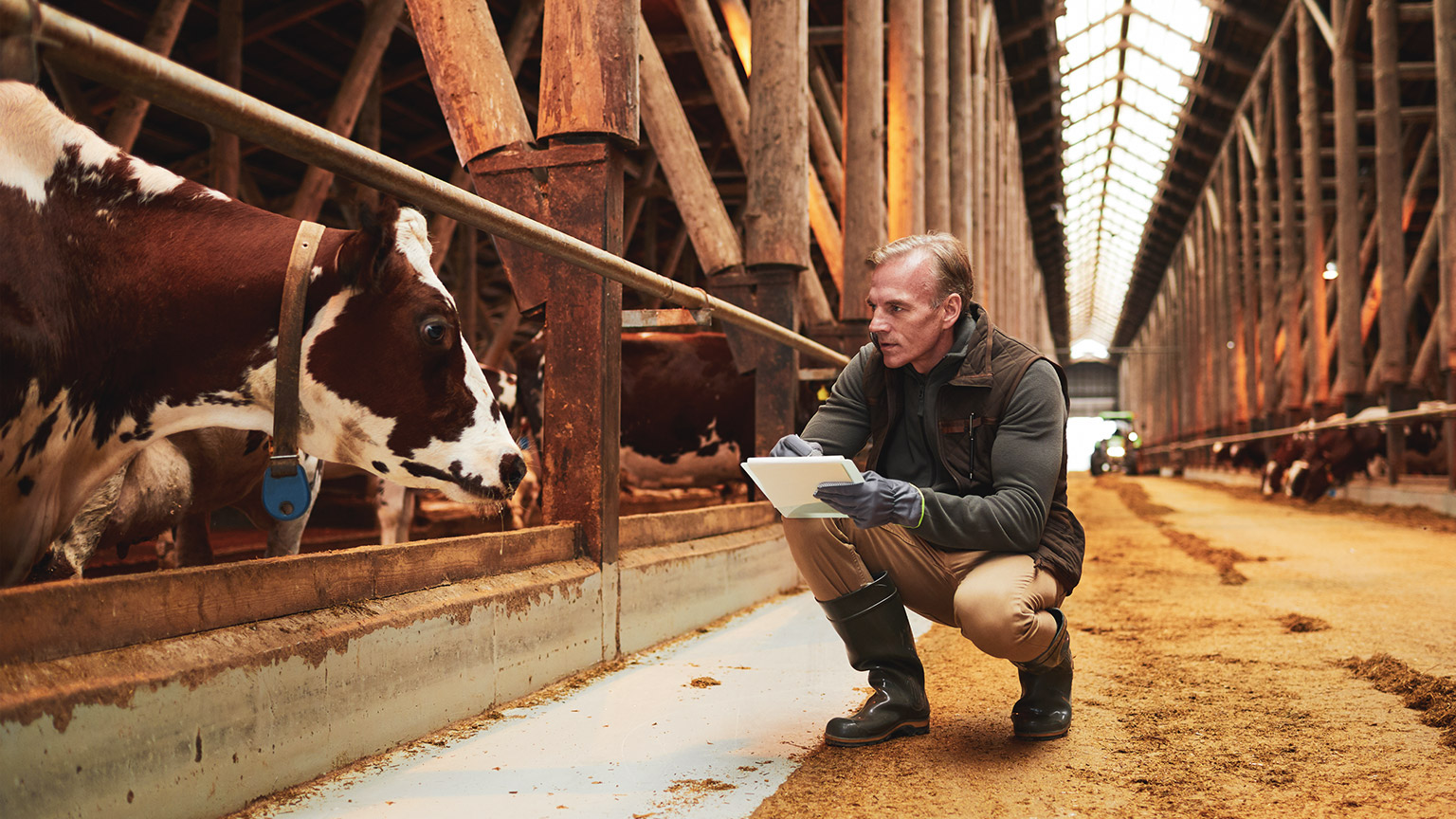As you will have come to learn, several reporting procedures are in place for safety, management, care with handling and communication. In addition to these, there are also procedures for reporting:
- Environmental hazards
- Potential and actual breaches of environmental legislation.
Reporting is an important part of working in the animal care industry. Reports are in place to refer to later to ensure quality improvement at the practice, document any injuries, and ensure the clinic or practice is operating in accordance with the company policies, procedures, regulations and legislation. All reports must follow a procedure outlining the details relevant to breaches or incidents and must be documented. Verbal reports, while good to make as they unfold, should always be supported by written documentation.
If you know there is an environmental hazard or a problem with the work you're assigned to do or if you notice something wrong that could have an environmental impact, you have a legal duty to tell your supervisor. To avoid an incident or to mitigate an issue, talk to your supervisor immediately. There are specific reporting procedures in place for environmental and resource hazards and risks that your workplace will have.
Examine the Environmental & Reportable Incident / Non-compliance Reporting Form from the Government of Western Australia to get a feel for what you might find in your workplace. Following is a scenario to give an idea as to what may need reporting in the animal care workplace.
Consider the following scenario

Mark has been working at a veterinary practice for the last six months and has only been in the industry for about a year. He works with a fairly large team of veterinarians, vet nurses and other staff training in the field. One morning, he notices another staff member throwing a syringe into the general waste bin rather than the sharps container, upon seeing this, he quickly picked up the syringe and put it in the correct bin. Mark did not report this to anyone as he had dealt with it immediately. He also felt uncomfortable in confronting his colleague who has only been working a short while.
A few weeks later, at the end of the day, Mark, his co-worker Ivana and the veterinarian Jesse, were cleaning up at the end of the day. Ivana was emptying one of the bins in the treatment room when something sharp pierced her right index finger through the plastic bag and her glove. Opening the bag to see what it was, there was yet another syringe in the rubbish instead of the waste container. Ivana cleaned and washed the affected area, applied an antiseptic cream and a band-aid. Ivana notified Jesse immediately, who then asked if anyone had noticed this before. Mark admitted he saw a staff member disposing of a syringe in the bin but did not want to overstep his place by confronting the individual or reporting it to management.
Jesse explained that as this is a breach of waste disposal procedures, resulting in a safety risk, incidents like these need to be reported as soon as they happen.
In the previous scenario, a report was not made immediately after the occurrence of the waste disposal breach and as a result, another staff member was injured. There may be situations in the clinic or practice where errors are made with waste disposal. Some of these can have minor implications while others can cause more environmental harm. Regardless of the severity of the hazard, they need to be reported to prevent them from escalating at a later time.
Keeping a record of when these situations arise ensures they can be prevented later and quality improvement can take place. The workplace will have a policy and procedure on the reporting process and usually there will be an environmental hazard report that you can complete and submit to your supervisor. No matter your level of experience or how long you have been working there, it is important you understand you also have a responsibility to make reports where necessary.
If you have witnessed a breach of environmental practices, it is up to you to not only raise the issue, but it is also your responsibility to follow up on the report and ensure the reported problem has been fixed. If it has not been remedied in a reasonable amount of time you should take this issue further and report to a higher level. If the problem is extreme, then you should cease the relevant task. If there is no action taken by your employer, there are ways that you can report it outside the business. For example, contact your local environmental protection agency.
Reporting procedures
When making a written report, you must consider the details that are required to make the report. These documents are legally binding, therefore care needs to be taken when they are made and as much detail as possible needs to be included. The report is often kept for several years after it has been made.
The following table outlines the details required in the report. You will also find an example of each detail and how to use it in the relevant context. For the purposes of this table, the previous scenario has been used to create examples.
| Details required | Example |
|---|---|
| Date and time |
The date and time of the incident must be recorded. For example: Date and time of the incident: 20/04/21 at 5.30 pm. |
| Who is reporting? |
The ‘who refers to the person who is making the report. This person needs to ensure they have filled out the appropriate details of the report and should have eye-witnessed the incident if it did not happen directly to them. In the scenario involving incorrect syringe disposal, Ivana would be the person making the report as this incident happened to her. |
| What happened? |
This part of the report involves the most detail. These details are a recount of the incident including What happened, how it happened and who it happened to. For example: As I was emptying the bin, my right index finger was pierced through the bin liner and the glove with a sharp object causing it to bleed. When looking at the source, I saw that it was a syringe that had been incorrectly disposed of. |
| Witnesses |
The details of anyone who was present at the time of the incident need to be included. In this case, Mark’s details would need to be included on the report as a witness to the incident. |
| Corrective action |
This part of the report includes the details of what action was taken in response to the incident. For example: I applied first aid by washing cleaning the wound and applying antiseptic cream and a band-aid. I then notified Jesse (the VET) to inform him of the incident, including the incorrect disposal of the syringe. |
| Follow up |
The follow-up details of the report include the actions that were taken in response and if any further first aid was required including the need for medical or hospitalisation. For example: I consulted with my doctor regarding the syringe. Jesse also consulted with the team regarding the correct disposal of syringes. Additional staff training may need to be considered when disposing of hazardous materials. |
| Signature | The person completing the report must sign it in the stipulated space as a means of confirming their witness to the incident and any follow-up action that was taken. |
Workplaces will create procedures to ensure they are complying with legal requirements that concern the environment. Procedures include information regarding areas such as how to identify and report hazards, potential breaches and breaches of relevant environmental legislation that are observed in daily work.
If you witness any breaches of environmental regulations, immediately notify your supervisor. Your supervisor will then follow procedures to report the breach.
The procedure that your supervisor follows will usually be conducted in this order:
- Locate the report for the environmental hazard or breach
- Create a report documenting the details of the environmental hazard or breach
- Identify the actions to be taken to remedy or impede it
- Submit report according to workplace policy.

The Department of Climate Change, Energy, the Environment and Water outlines the following areas where perceived breaches of legislation are reportable:
- hazardous waste
- heritage sites
- international wildlife trade
- land clearing
- ozone
- sea dumping
- threatened ecological community or species
- underwater heritage sites
- illegal logging.
The severity of the breach will determine how extensive the documentation will need to be.
There may be situations, however, when your report is not being taken seriously or ignored by your supervisor and you will have to report this to the next level up in management.
Aside from upper management, you could contact your local environmental protection agency who will guide you through the reporting process, or you can report a perceived breach of environmental law at a federal level with the Australian Government Department of Climate Change, Energy, the Environment and Water. The online form will walk you through each step of making a report on a serious environmental breach.
Knowledge check
Complete the following questions.
Prepare for your Structured Workplace and Learning Assessment
Now that you have a good understanding of environmentally sustainable work practices, you can start to prepare yourself for the Structured Workplace Learning and Assessment.
Ensure you can provide:
- two examples of when you followed your workplace policies and procedures to comply with environmental legislation (for example, waste disposal)
- two examples of when you reported breaches or potential breaches of environmental legislation, including the situation, who you reported to and how you reported them
- two examples of when you followed workplace plans to improve environmental practices and resource efficiencies (for example, resources such as food, paper, water, products or electricity).
Tip: During work placement in animal care keep a diary and jot down examples at the end of each workday.
Well done! You have now completed this module. As you worked through the learning you would have learnt:
- to participate in environmentally sustainable work practices
- the relevant governing environmental and sustainability legislation
- appropriate methods of waste disposal, including disposal that will not pose risk to people, animals or the environment.
- various environmental hazards
- methods of reporting hazards and breaches.
The following list provides you with some additional information you may wish to refer to when it comes to environmental sustainability. It is a good idea to sign up or subscribe to relevant industry newsletters that will encourage your participation in relevant sustainability practices.
- Australian Government Department of Climate Change, Energy, the Environment and Water
This resource provides you with a range of information, including about biodiversity and climate change, as well as links and instructions for reporting breaches. This website has been founded by the Australian Government with authentic, reliable, and up to date information pertaining to sustainability. - RSPCA Queensland
This article written on behalf of the RSPCA in Queensland discusses the importance of merging sustainable practice with animal welfare. The team at the RSPCA has teamed up with Recollect App to create a resource to achieve environmental sustainability and animal rescues. - RSPCA New South Wales
This resource provides you with an environmental plan implemented by the RSPCA in NSW. The article provides a scope of the movement towards sustainability and reduction of the carbon footprint. - NSW Department of Planning, Industry and Environment
This website provides a range of e-newsletters you can sign up for to keep up to date with current trends, changes, and news within the animal care environment. Many of these e-newsletters range from living museums, Tooronga Zoo conservation and helping our koalas.

